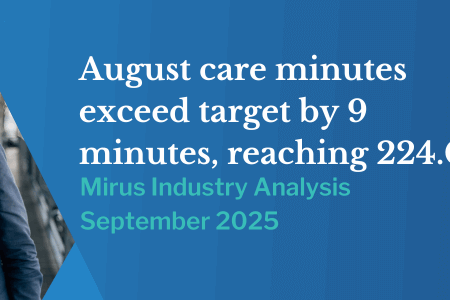Is there an answer to our shrinking workforce?
August 17, 2015 | Aged Care Management

In 1970, there were 15 workers per retired couple in Australia. In 2010, this ratio fell to 10 workers per retired couple. In 2050, this will drop even further to just five workers per retired couple. This is according to research from McCrindle, and it paints a bleak picture of the future.
Roy Morgan also noted that in 2014, Australia reached the lowest number of workers in the workforce since 2012. With a lack of staff, key industries will struggle to fill positions as a wealth of knowledge and experience is lost.
The future outlook
The Productivity Commission released a paper that investigated the impact of ageing on both the economy and the workforce of the country. While the organisation noted the positive effects of a population that was living longer, the issue of a declining workforce was clearly apparent.
Key industries will struggle to fill positions as a wealth of knowledge and experience is lost.
As noted above, the issues are largely two-fold. On one hand, the country faces a shortage of workers for a number of important industries (including aged care), and the population continues to grow older, which means people living in aged care facilities for longer.
New financial strategies aren’t the answer here, unfortunately, as there are several approaches that need to be considered.
The possible solutions
Lise Windsor, when preparing a paper for an Australian Research Council project on demographic change, noted that there’s now a growing recognition from both government and employers of the issue of demographic change. She explained that these bodies are starting to wake up to the implications of a vastly different workforce ratio.
Promoting the aged care workforce is going to be a crucial undertaking, that is, attracting a new generation of individuals into the staffing pool. As in many other industries, the focus here will have to begin at the most basic level, in schools and related fields.
On a different note, there is also technology. As we’ve noted before, technology could start to play an important role in caring for elderly Australians. While we’re not likely to see bipedal robots carrying residents to their rooms any time soon, therapeutic robots like the PARO seal can help to calm residents and reduce the need for dedicated staff.
Looking further abroad, there could opportunities in the land of the dragon – China. This nation is a source of rich opportunity for our aged care sector, specifically when it comes to cross-collaboration. Thanks to the Free Trade Agreement, it’s going to be easier for the two aged care industries to work together to tackle workforce issues.
Technology could start to play an important role in caring for elderly Australians.
As the Australian population continues to evolve, and the number of workers starts to drop off, government bodies will need to take action with regards to recruitment efforts. After all, aged care facilities will require skilled staff.
And as for providers? The people in charge of supplying care to elderly Australians may want to consider the best ways to bring staff on board and subsequently retain them, as well as new technologies in order to reduce the number of required staff.
“Australia’s population will both grow strongly and become older. Such slow but profound shifts in the nature of a society do not elicit the same scrutiny as immediate policy issues,” the Productivity Commission report noted. “The preferable time to contemplate the implications is while these near-inevitable trends are still in their infancy.”
What do you think are the biggest opportunities for success in the aged care industry today? Please contact us and let us know!
 China and Australia will face many of the same aged care issues.
China and Australia will face many of the same aged care issues.

